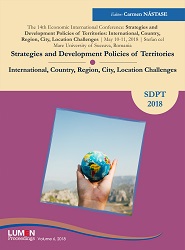Techniques used in Artificial Intelligence for Selecting Waste by Category for Bio-Processing
Techniques used in Artificial Intelligence for Selecting Waste by Category for Bio-Processing
Author(s): Eugenia Iancu, Aurel Burciu
Subject(s): Sociology, Scientific Life
Published by: Editura Lumen, Asociatia Lumen
Keywords: Recognition form; ,waste; artificial intelligence; database; knowledge;
Summary/Abstract: Waste, the inevitable result of human activity is a topical issue due to quantitative growth and diversification; their degradation is a danger to the environment and for the health of the population. The development environments of knowledge - based systems currently existing have interface components with high level, object - oriented programming languages, database management, etc., and some applications of artificial intelligence are developed in languages such as C, Prolog, ADA, etc. In this context, the main components of a system based on knowledge in the selection of waste models are: Creating and administering the database, Database Query, Statistical Data Processing, Artificial Intelligence Applications.Data and knowledge to be stored and processed within a system in the waste domain refer to certain categories that are subject to recycling and aggression of environmental factors. The waste description and experiments in this area generate two categories of data, namely: 1. descriptive data, 2. experimental data. The data that describes the source material of the waste (descriptive data) is predominantly knowledge that will be represented in the database within an evolutionary universal data structure.In this paper are presented a series of theoretical aspects regarding one of the techniques used in artificial intelligence, namely the recognition of forms for selection waste patterns. Form recognition is a technique of artificial intelligence, which has as object classification of a set of objects, processes or events, regardless of their nature. Given a division into classes of known forms, it must be indicated to which class belongs an unknown form. Determination of belonging to a class is done taking into account the similarity of the unknown form to the forms of the class.
- Page Range: 434-440
- Page Count: 7
- Publication Year: 2018
- Language: English
- Content File-PDF

